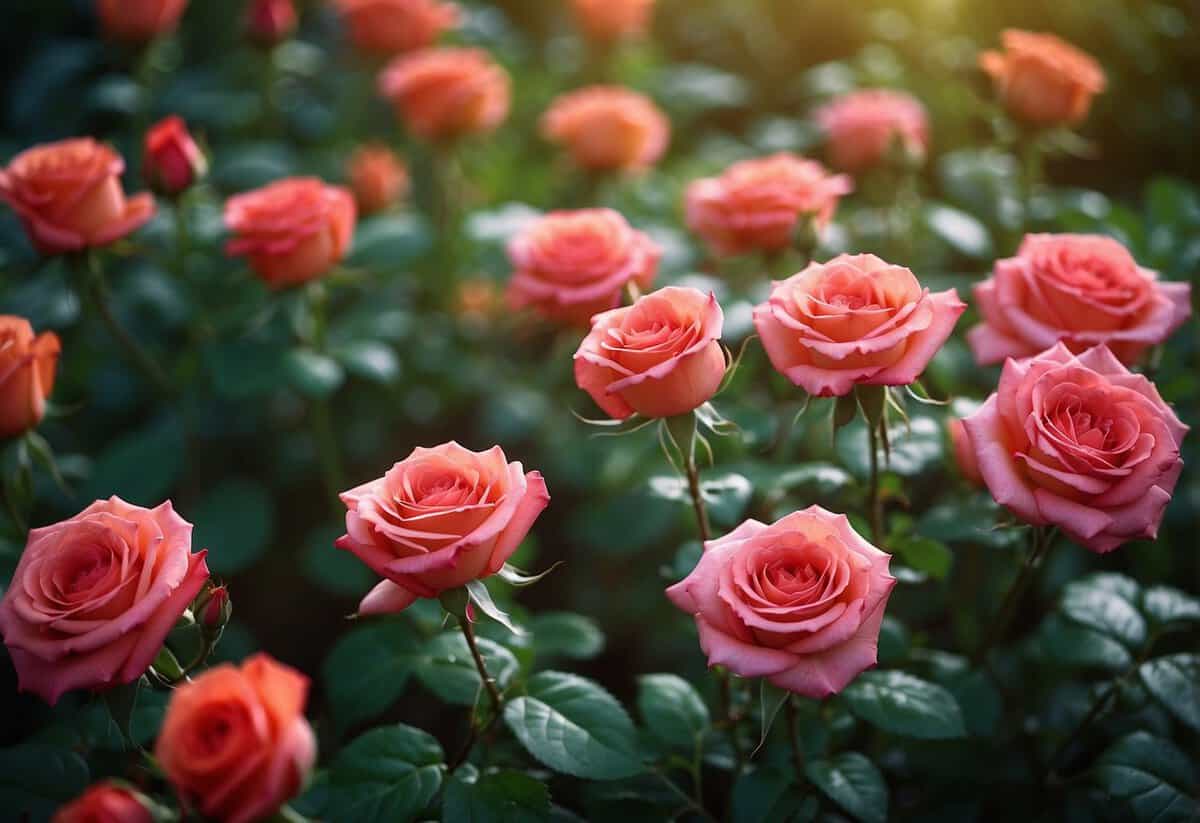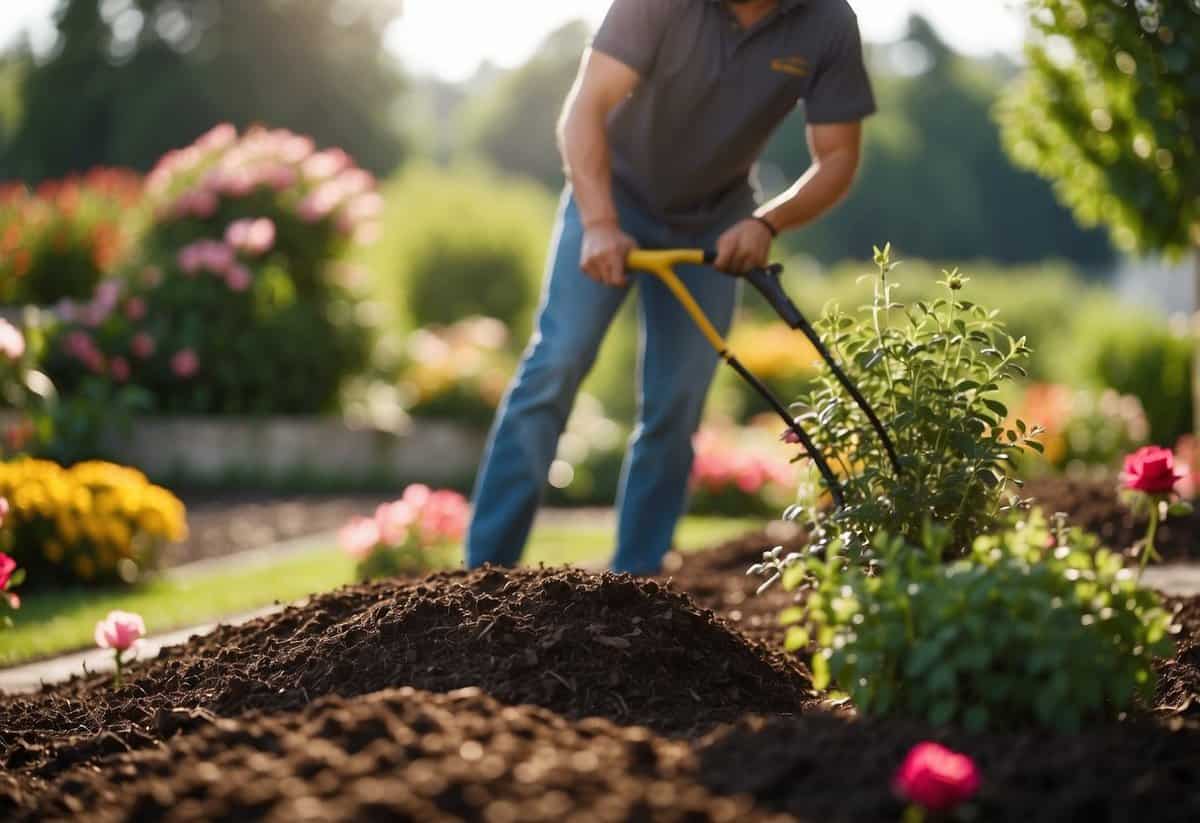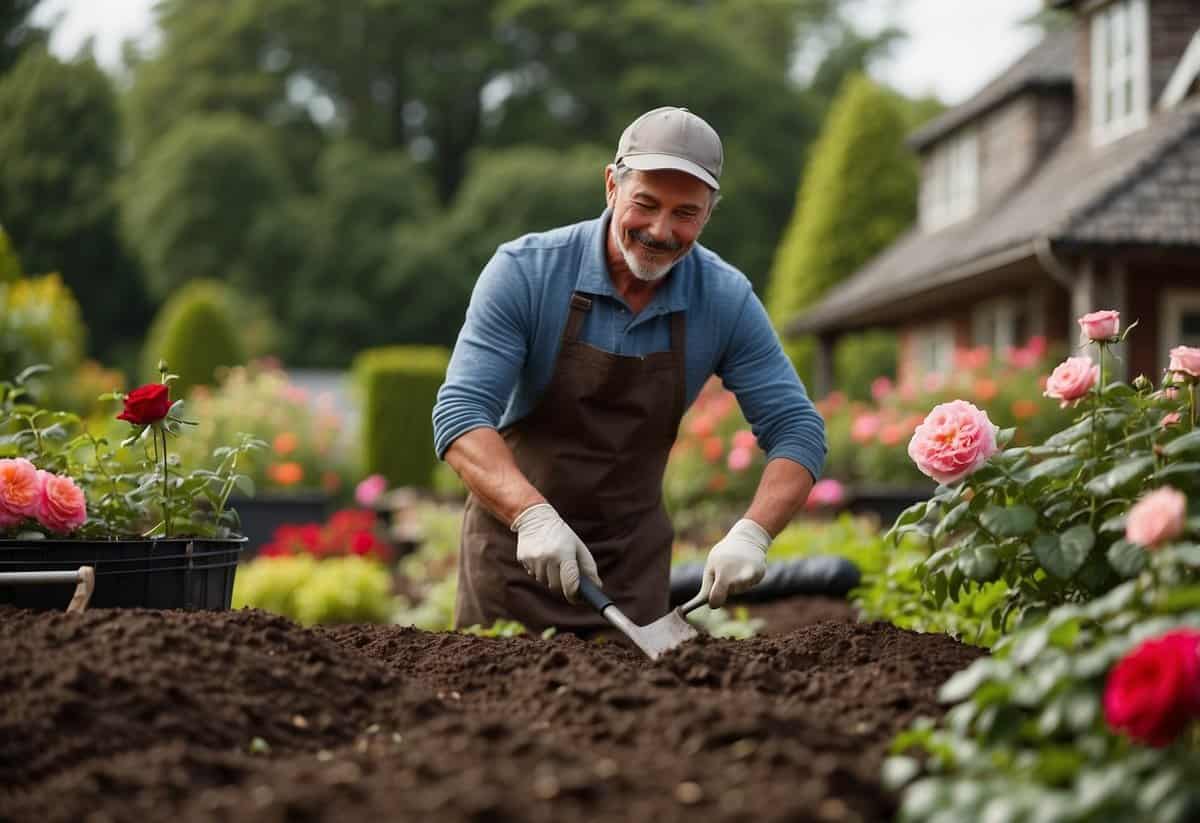Rose Garden Tips: Easy Ways to Create a Blooming Paradise
Growing a beautiful rose garden can be both rewarding and enjoyable. If you’re new to gardening or just looking for some fresh advice, there are plenty of tips available to help you succeed. This article will guide you through essential tips to ensure your roses thrive and flourish.

Whether you have limited space or a sprawling yard, you can create a stunning rose garden that brings joy and color to your home. By following practical advice, you’ll be able to choose the right types of roses, prepare your garden, and maintain healthy plants year-round.
1) Choose the Right Variety

Choosing the right rose variety is important. Some roses are better for certain climates or soil types. For example, Rosa foliolosa thrives in the Western U.S.
Consider if you want climbing roses, shrub roses, or miniature roses. Each type offers different looks and needs. Climbing roses can cover fences, while shrub roses make beautiful, bushy additions. Miniature roses work great in small spaces.
Remember to check if a rose variety is native or non-native to your area. Non-native species can be invasive and harder to manage.
2) Prepare the Soil

To grow healthy roses, start by loosening the soil. Use a spade or tiller to turn it over.
Next, add organic matter. Mix in compost, manure, or leaf litter. Aim for at least 2-4 inches each year.
Check the soil pH. Roses prefer slightly acidic soil, around 6.5. Adjust with aluminum sulfate or sulfur if needed.
Finally, ensure good drainage. Roses don’t like to sit in waterlogged soil.
3) Proper Spacing

When planting roses, giving them enough room is crucial. For shrub roses, keep at least two feet between plants to ensure good airflow.
Hybrid Tea roses should be spaced 30 to 36 inches apart. These plants will cover 6 to 10 square feet.
For English roses, a 36-inch gap is ideal to allow for their spread. Proper spacing helps your roses thrive and keeps them healthy.
4) Watering Techniques

Watering roses properly is key to a healthy garden.
Roses need deep watering, so water the soil to a depth of 18 inches. This ensures the roots get enough moisture.
Early morning is the best time to water. This helps prevent diseases and allows the plants to absorb water before the day heats up.
Use a soaker hose or drip irrigation system to water at the roots. Wet leaves can lead to fungal problems.
Consider mulching around the base to retain moisture and reduce evaporation. Happy gardening!
5) Mulching Tips

Mulching your roses can keep the soil moist and reduce weeds. Before you mulch, clear away old leaves and weeds from the base of the plant.
Use a 2-4 inch thick layer of mulch around the base. Good options include hardwood chips, shredded bark, pine needles, straw, or compost. This helps retain moisture and improve soil health.
Consider lightly scratching 1-2 cups of alfalfa meal into the soil before mulching to add nutrients. This can give your roses an extra boost for healthier growth.
6) Pruning Strategies

To keep your rose garden healthy and blooming, pruning is key. Start by removing any dead or diseased branches. This helps prevent diseases from spreading.
Next, cut back any branches that cross through the center of the plant. This boosts airflow and sunlight to the middle parts.
When making your cuts, aim for a 45-degree angle. Cut about 1/4 to 1/2 inch above an outward-facing bud. This encourages new growth outwards, rather than towards the center. Proper pruning keeps your roses looking their best!
For more details, check out these tips.
7) Pest Control

Keeping pests away from your roses is key to a healthy garden. Start by regularly inspecting your plants for signs of trouble. Look out for tiny bugs, discolored leaves, or sticky webbing.
For natural pest control, consider using neem oil. It works well against common pests like aphids and sawflies. Simply spray it on your roses when you spot these bugs.
You can also introduce beneficial insects like ladybugs to your garden. They feed on many harmful pests and can help keep your roses safe. Remember, a healthy garden attracts fewer pests naturally.
8) Fertilizing Schedule

Start fertilizing your roses in early spring when you see new growth about 6 inches tall. This helps boost growth.
In summer, apply a second dose of fertilizer right after the first bloom to encourage continuous flowering.
Make sure to give roses time to harden off before winter. This means stopping fertilization late in the season. Regular feeding will help keep your roses healthy and vibrant throughout the growing season.
9) Winter Protection

When winter approaches, it’s important to give your roses extra care. Water them deeply before the first frost. Your roses need about two gallons of water per week.
Use organic mulch around the base of the roses to protect the roots. Consider using rose cones or burlap wraps for extra insulation in cold areas.
Add soil or compost around each plant to create a hill. Cover this with straw or leaf mulch to keep the roots warm.
10) Deadheading Roses

Deadheading roses is key to keeping your plants healthy and blooming. Cut off the spent blooms just above a set of healthy leaves or leaflets using sharp pruning shears. This prevents the plant from producing seeds and encourages new growth.
Make your cut at a 45-degree angle above an outward-facing bud eye. This small nodule at the base of the leaf will sprout new growth after pruning, encouraging stems to grow outward. Regularly clear away any fallen plant material to prevent pests and diseases from taking hold.
Preparing Your Soil

A successful rose garden begins with well-prepared soil. Key steps include testing the soil pH and adding organic matter to enhance fertility and structure.
Testing Soil pH
Roses thrive in soil with a pH between 6.0 and 7.0. To determine your soil’s pH, you can use a home testing kit or send a sample to a local extension service. Testing helps you identify if your soil is too acidic or alkaline.
If your pH is outside the ideal range, you may need to amend it. Adding sulfur can lower the pH, while lime can raise it. Make adjustments gradually and test the pH periodically. This careful monitoring ensures your roses get the optimal growing conditions.
Adding Organic Matter
Adding organic material is crucial for healthy rose growth. Organic matter improves soil structure, enhances drainage, and increases nutrient availability.
You can add compost, manure, or leaf litter to your soil. Aim for at least 2-4 inches of organic material each year. Simply spread it over your garden and mix it in thoroughly. This practice enriches the soil and provides a steady release of nutrients over time, fostering robust rose bushes. For more detailed guidance, you can check out this step-by-step guide on creating the perfect soil for growing roses.
Planting Your Roses

Plant your roses in an area with lots of sunlight and ensure you give each plant enough space to grow. These steps will help your roses thrive and produce beautiful blooms.
Choosing the Right Location
Roses need at least 6 to 8 hours of sunlight every day. Choose a spot in your garden that has full sun. This will encourage healthy growth and more flowers. If you plant roses in a shady area, they may not bloom well, and they might get diseases more easily.
Good drainage is also important. Avoid places where water collects after it rains. Saturated roots can rot, which is bad for your roses. You can improve drainage by adding compost or organic matter to the soil.
Spacing Your Roses Correctly
Give your roses enough room to grow. Space them about 2 to 3 feet apart. This helps air circulate around the plants, reducing the risk of diseases like powdery mildew or black spot.
Crowded plants can become weak because they compete for sunlight, water, and nutrients. Proper spacing allows each plant to get what it needs to thrive. Plus, it makes it easier for you to care for your roses, such as when you are pruning or applying mulch.
For more value, adding a 2- to 4-inch layer of mulch around the base will help conserve water and keep the soil temperature stable.







